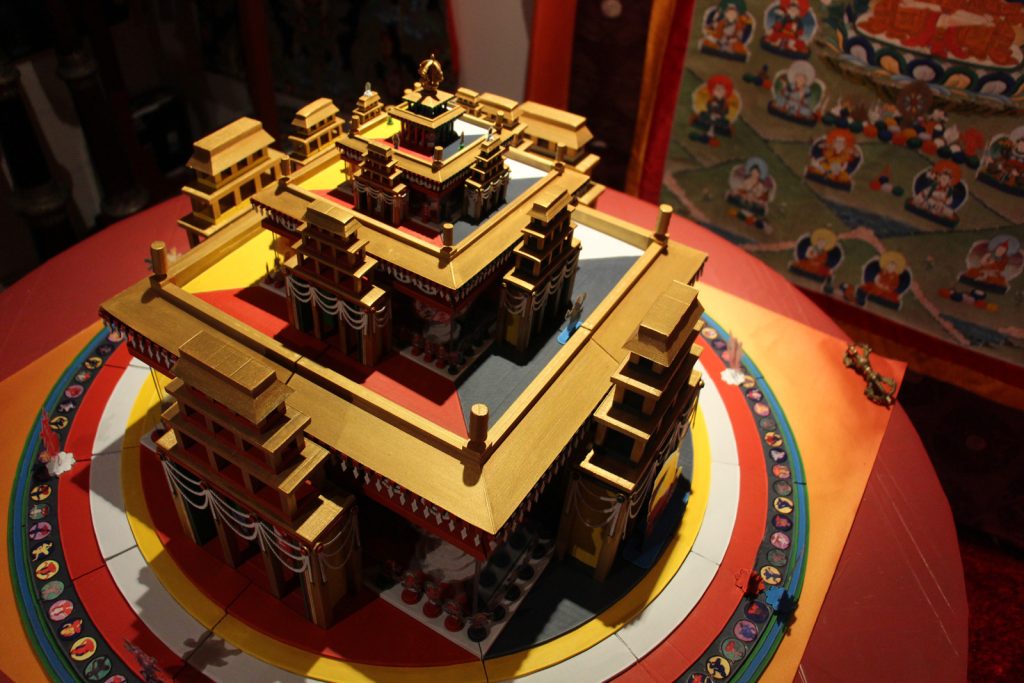Many people who are familiar with the Kalachakra (Wheel of Time) mandala through sand mandala ceremonies or scroll paintings (thangkas) do not know that those images are meant to represent a three-dimensional figure. So Khentrul Rinpoche, a master in the nonsectarian Rimé tradition and preeminent teacher of the Kalachakra system in the Jonang school of Tibetan Buddhism, worked with his students to create a 3D model in order to help new practitioners better understand the complex teaching the mandala embodies.
“A 2D mandala is beautiful to look at, but it’s really hard to get the full sense of the volume and the space from it,” explained Venerable Tenpa’i Gyaltsen, Khentrul Rinpoche’s student who has helped his teacher write seven books about the Kalachakra teachings. “It’s like looking at the blueprints of a house, instead of the house. It’s hard for beginners to see it. But the instant they see the 3D mandala, they get it, which is an amazing feat and very beneficial for our practitioners.”
Ven. Gyaltsen handled the technical end of the mandala’s construction. Before moving to his teacher’s Tibetan Buddhist Rimé Institute in Belgrave, Australia, Ven. Gyaltsen was a graphic designer in Vancouver, Canada, where his work included building models for 3D printing.
The mandala took nine months to produce—three months taken up by printing alone—and was completed in March 2019. It is made up of more than 700 pieces and when assembled is around 34 inches in diameter and 16 inches tall. Mirroring the sand mandala ritual, the 3D mandala must be assembled in a particular order before each empowerment ceremony and disassembled at the end. In June, Khentrul Rinpoche consecrated the mandala at the Tashi Chöthang Monastery in the Zidka region of Tibet. He has used it in two other ceremonies since then: in New York City in August and Vienna in October.
Ven. Gyaltsen said Khentrul Rinpoche and his students plan to start building the 3D mandalas for other sanghas and to create a smaller model for mass production. The hope is to increase Western familiarity with the Kalachakra mandala, even if only superficially at first.
“If it becomes as ubiquitous as a Zen garden—Kalachakra everywhere—then we’re getting close to our goal,” Ven. Gyaltsen said.
A longer version of this article first appeared on Trike Daily.
Thank you for subscribing to Tricycle! As a nonprofit, we depend on readers like you to keep Buddhist teachings and practices widely available.
